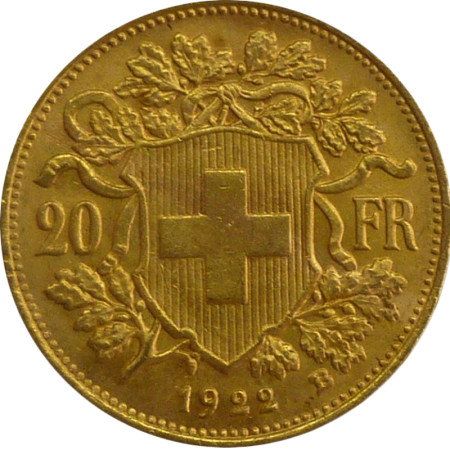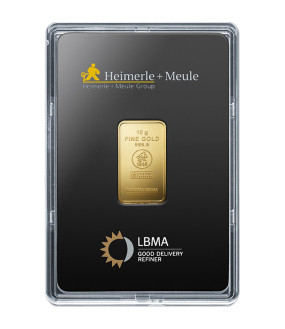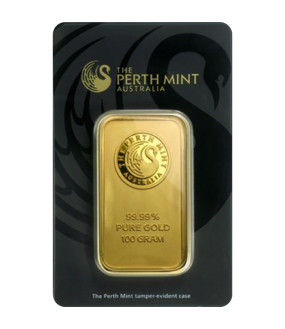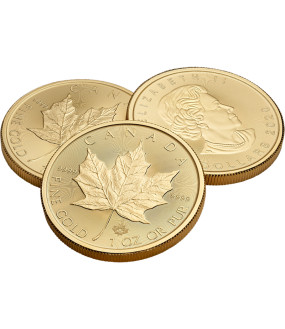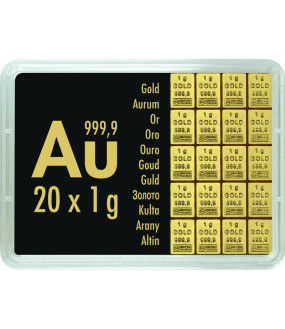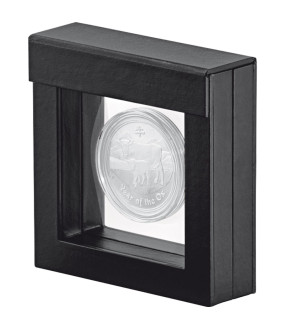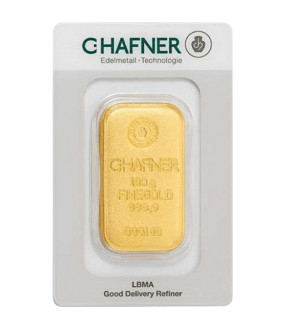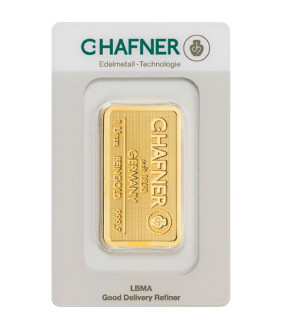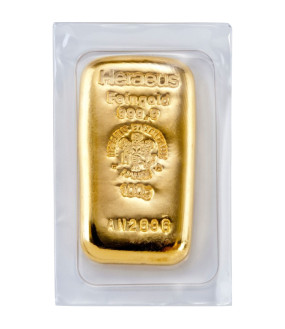Swiss Vreneli 20 Franc - 5,81 gram Gold
1210020
steuerfrei nach § 25c UStG
Umlaufware - Bankenstandard
im durchsichtigen Münztäschchen
analog Einzelverpackung
Gold Vreneli 20 francs / 5.81g
The "Gold Vreneli" is one of the most famous Swiss gold coins. It is the successor of the Helvetia minted between 1883 and 1896. Helvetia is the neo-Latin name for Switzerland and the female figure that appears on the coins. She is also referred to as Libertas (freedom) and is considered a symbol for all Confederates. There are a whopping 58.6 million pieces of the 20-franc gold coin in circulation, which was minted between 1897-1949. This is due to the fact that it was and still is the custom in Switzerland to put Vreneli in the cradle for the birth. But also very popular as gifts and competition prizes.
Rare years of issue, theoretically out of the question for gold investors because of the high premium to the gold price, are the 1904-06 (only 100,000 each), 1926 (50,000) and 1935 (175,000).
Starting in 1931, many countries began devaluing their currencies due to the Great Depression. On September 27, 1936, the "Federal Decree on Extraordinary Measures to Restore the Financial Balance in the Federal Budget" also devalued the Swiss franc by about 30% to bring it into line with the changed international conditions. The gold parity was lowered from 290 mg to 190 to 215 mg of fine gold per franc. In addition, the Swiss National Bank was relieved of its obligation to exchange banknotes for gold. As a result, the gold coins, although they have not been taken out of circulation to this day, lost their market value, as the gold value of the 20-franc piece rose to about 28 francs. The gold coins have been mainly hoarded since then.
Front
The obverse of the 20-franc coin shows a bust of a woman facing left, her rich hair tied up in a braided pigtail, her dress embroidered with edelweiss, against a mountain background. Above the bust of the woman is the inscription "Helvetia", and at the bottom right of the edge, recessed, the name of the artist "F. Landry".
Back
The back shows the Swiss coat of arms in a cut-out shield on a lush oak branch, the currency, the year, and to the right of it the mint mark B (pearl circle). The post-war mintages of the year of issue "1935" have an additional "L" (Lingot = ingot) to the left of the year. The edge lettering is raised and consists of 22 stars (for cantons, 7/7/8). Coins from 1947 and 1949 respectively have the edge lettering "AD LEGEM ANNI MCMXXXI".
Available sizes:
Weight Facevalue Name
year
Fineness Total Weight size 2,903 g 10,00 SFr. 10 Franken Vreneli 1911 - 1922 minted 900 3,226 g Ø 19,00 x 0,90 mm 5,806 g 20,00 SFr. 20 Franken Vreneli 1897 - 1949 minted 900 6,452 g Ø 21,00 x 1,25 mm 29,032 g 100,00 SFr. 100 Franken Vreneli 1922 minted 900 32,258 g Ø 35,00 x 2,20 mm
Gross weight in grams 6,45 Finess 900 Tax steuerfrei nach § 25c UStG Condition Umlaufware - Bankenstandard Single package im durchsichtigen Münztäschchen Multi package analog Einzelverpackung Endge geriffelt Thickness in mm 1,25 Diameter/Width in mm 21 Country Schweiz Embossing year verschiedene Jahrgänge Par value 20 SFr

